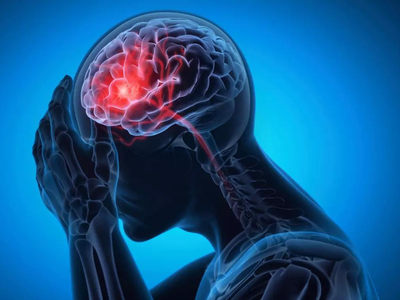ARTICLE AD BOX

Stroke is often misunderstood as an elderly disease, but Apollo Hospitals neurologist Dr. Sudhir Kumar warns it can affect people in their 30s and 40s. In a post on X, he debunked myths, stressing that 80 to 90 percent of strokes are preventable with lifestyle changes.
When it comes to strokes, every second counts. A stroke is when the blood supply to part of your brain is interrupted or severely reduced, depriving brain tissue of oxygen and nutrients.
Within minutes, brain cells start to die — which is why stroke is one of the leading causes of disability and death around the world. The good news? Identifying the early signs and then acting swiftly can be all that stands between recovery and chronic damage.
The power of FAST
To teach people words to describe the symptoms of stroke which must trigger a 911 call for help, experts have coined the acronym FAST — F for face drooping; A for arm weakness; S for speech problems - and T is for Time.F – Face Drooping: Ask the person to smile. If one side of their face droops or goes numb, it could be a sign of stroke.A – Arm Weakness: Ask them to lift both arms. Does one arm drop down or feel weak? It can indicate muscle weakness on one side of the body, a typical stroke symptom.S – Speech difficulty: Is speech slurred or otherwise strange? Can they echo a simple sentence? You may struggle to speak or understand spoken language, which is common in the early hours of a stroke.
T – Time to Call for Help: If you observe any of these signs, do not wait. Gather all allergies/medication and call 911 at once. In addition, do not wait even if the symptoms seem to go away — swift treatment can save brain function and, ultimately, a life.
Why acting fast matters
Time is brain in stroke care. The sooner someone gets the help they need, the better the chance for recovery. Medications that can restore blood flow to the brain work best when given within a few hours of the start of a stroke.
If left untreated, scaphoid fractures can result in serious complications, permanent disability or even death.However, sadly many people do not notice the symptoms or wait and see if things get better on their own. Public education is still one of the biggest challenges to people receiving prompt stroke care — particularly in communities where stroke symptoms are misconstrued as tiredness, stress or confusion.
Who is at risk?
Anyone can have a stroke, but certain factors elevate the likelihood, among them high blood pressure and diabetes; high cholesterol levels if a person has diabetes or heart disease; smoking; obesity, and sedentary behaviour. For those 55 and above, or who have a family history of stroke or heart disease, it is especially important to be aware of changes in their health.
Prevention through lifestyle
Clean living is the most effective way to prevent a stroke. However, you can dramatically reduce your risk by eating well, exercising regularly, maintaining healthy blood pressure and cholesterol levels, not smoking and managing stress.
A call for awareness
Early identification of stroke symptoms and quick action can help to save lives and prevent disability. Potentially lifesaving information about the disease should be shared with loved ones, friends and co-workers — knowledge is power when it comes to avoiding illness.Dr Amit Jaiswal, Director and Senior Consultant Neurosurgery, Manipal Hospital, Bhubaneshwar

 13 hours ago
5
13 hours ago
5








 English (US) ·
English (US) ·